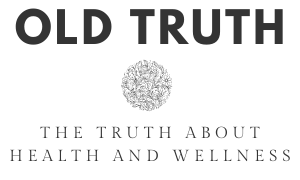Many know of Botox injections as cosmetic procedures that individuals may undergo in order to smooth wrinkles or fill in smile lines. However, Botox, also known as botulinum toxin type A, can also be used to help treat certain medical conditions and is even occasionally prescribed by doctors. Botox works by temporarily prohibiting the movement of a specific muscle, which is why it is occasionally used to help treat medical conditions in addition to smoothing crow’s feet and other common signs of aging. If you are curious or are considering Botox as part of a medical treatment, keep reading for information on three conditions Botox may help alleviate.
Chronic Migraines
One of the main conditions that Botox injections may help treat is chronic migraines. If you are prone to migraines, you know just how much of a pain they can be. Often, migraines will completely overcome a person, making them sensitive to light and sound or even nauseous from the headache pain. Many who struggle with migraines even miss work or school due to the immense hurt they feel. Doctors who use Botox to treat migraines will inject a small amount of the toxin in your temples or the back of your neck. If you are recommended Botox injections for your migraines, you may be able to get it covered by insurance. Healthquotegurus can help you determine the best insurance plan for you at the lowest cost, and that insurance could help cover your treatment, at least partially. Make sure you do your research when choosing an insurance plan and keep in mind any conditions such as chronic migraines that you may seek treatment for in the future.
Excessive Sweating
Botox injections can also be used to help treat excessive sweating. This condition is also known as hyperhidrosis, and it can be not only embarrassing but very uncomfortable. Hyperhidrosis can affect underarms, hands, feet, and even the head or face. Botox injections can help alleviate this condition or at least cut down on the amount of sweating. The treatment has been shown to reduce sweating by 87 percent, which is a fairly high margin. Even though sweating is sometimes necessary to regulate our bodies’ temperatures, Botox shots have been shown to be acceptable and safe treatment options for those who struggle with hyperhidrosis. If you have excessive sweating and you feel it may be impeding your life in any way, search for “botox near me” to find a medical spa or practitioner who specializes in Botox treatments. They can help you determine if injections are right for you and for your sweating situation.
Eye Conditions
Botox injections can also be valid treatments for a number of eye conditions. These include crossed eyes, lazy eyes, or eyelid spasms. The toxin in Botox can temporarily paralyze the muscles in one’s eye that spasm, which can prevent future effects of eyelid spasms, such as droopy lids or uncontrollable twitches. If you have a lazy eye or crossed eyeballs, Botox can also be helpful. Those with these conditions can use Botox injections to relax the muscles around the eye, making both eyeballs return to a normal position. If you have one of these conditions but do not want to undergo surgery to aid them, Botox injections are a great way to create the same effect, though they do need to be administered throughout your life. However, they are a safe and effective alternative to the surgery.
Even if you are not struggling with any of the conditions discussed above, it is important to realize that Botox injections are not solely cosmetic in use. In fact, the toxin can be used to alleviate more than a few medical conditions, and can make the lives of those that struggle with those conditions much easier.


Comments are closed, but trackbacks and pingbacks are open.